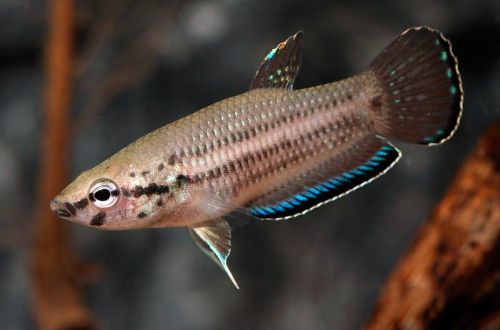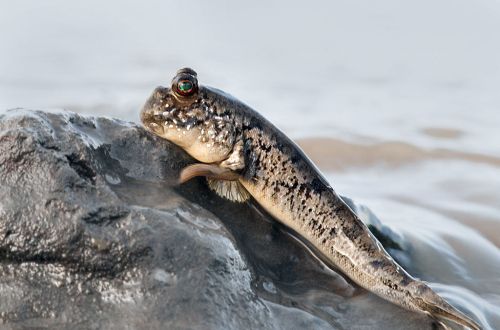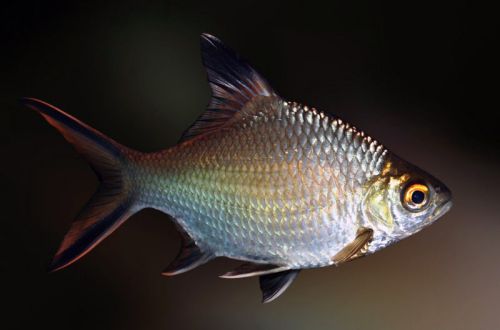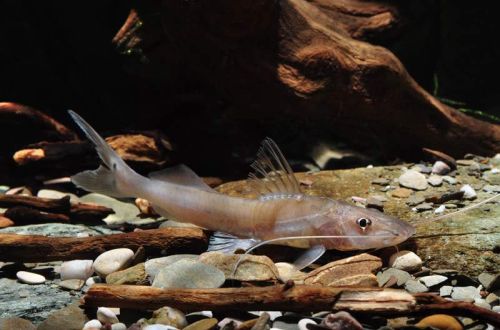
betta simple
Betta simple, scientific name Betta simple, belongs to the Osphronemidae family. Despite the name and classification, this fish is closer to the Gourami than to the Fighting Fish. Lives in an atypical environment compared to related species, so there may be compatibility issues. An experienced aquarist will not have any difficulties in keeping, however, beginners may encounter a number of difficulties.

Contents
Habitat
Comes from Southeast Asia. It is considered endemic to a limited region in Thailand in the state of Krabi. The natural habitat of this species is in the karst area and contains neutral alkaline water with a pH of 7.0–7.4. A typical biotope is a series of deep limestone sinkholes that form pools on the surface and are connected by streams with limestone rocks and gravel. The water is very clear and has a pronounced blue-green color due to the high proportion of dissolved calcium carbonate. Aquatic vegetation grows mainly in the coastal zone.
Brief information:
- The volume of the aquarium – from 50 liters.
- Temperature – 22-28°C
- Value pH — 7.0–8.0
- Water hardness – 5–15 dGH
- Substrate type – any
- Lighting – subdued
- Brackish water – no
- Water movement – little or no
- The size of the fish is 4–6 cm.
- Food – preferred food for labyrinth fish
- Temperament – conditionally peaceful
- Content alone, in pairs or in a group
Description
Adult individuals reach a length of 4–6 cm. It is a close relative of the Javanese Cockerel and has many features in common with it. The color is light with gray-pink hues. The body pattern includes a series of dark horizontal stripes. The scales have a greenish-blue iridescent tint. The tail and fins are adorned with a black edging and a blue border. Males look larger and brighter than females.
Food
In nature, it feeds on small invertebrates, but in the aquarium it will accept most popular foods in dry, frozen and live form. It is recommended to use specialized food for labyrinth fish produced by many manufacturers. Do not overfeed, these fish are prone to obesity.
Maintenance and care, arrangement of the aquarium
The optimal size of the aquarium for a pair of fish starts from 50 liters. When keeping Betta simple, it is important to recreate a habitat similar to that in which fish live in nature. The choice of design elements will not cause difficulties. Subdued lighting and a few aquatic plants, including floating ones, may be sufficient. The rest of the decor is selected at the discretion of the aquarist. If breeding is planned, then shelters should be provided – places of potential spawning. For example, decorative objects with caves, grottoes, or ordinary ceramic pots turned on their side, or pieces of PVC pipes.
Maintaining stable water conditions within the allowable range of hydrochemical values and temperatures is essential. To this end, it is necessary to carry out regular maintenance procedures for the aquarium (cleaning, replacing part of the water) and equip it with the necessary equipment, primarily a filtration system.
Behavior and Compatibility
Betta simplex are kept in different conditions than other Labyrinths (high pH and dGH), limiting the choice of compatible related species. Intraspecific relationships are built on the dominance of males, between which skirmishes for territory can sometimes occur, but in a large tank there will be no problems. As neighbors in the aquarium, fish that can live in hard, slightly alkaline water, and at the same time are distinguished by their modest size and peaceful disposition, are suitable.
Breeding / breeding
Under favorable conditions (water composition, varied diet), in the presence of sexually mature individuals, the appearance of offspring is very likely. This group of fish is characterized by parental care, and it falls entirely on the shoulders of the male. With the onset of the mating season, the fish perform a kind of embrace dance, during which the female releases one egg at a time, and the male fertilizes it and immediately takes it into his mouth. At the end of the “dance”, the entire masonry will be in the mouth, where it will remain for 9-16 days. At this time, the male tries to stay away from other fish, sometimes hiding in a shelter. If frightened, he may release unripe eggs or swallow them. The hatched fry are relatively safe next to their parents, but other fish can be a real danger, so it is advisable to transfer the fry to a separate tank with identical water conditions.
Fish diseases
The cause of most diseases is unsuitable conditions of detention. A stable habitat will be the key to successful keeping. In the event of symptoms of the disease, first of all, the quality of the water should be checked and, if deviations are found, measures should be taken to correct the situation. If symptoms persist or even worsen, medical treatment will be required. Read more about symptoms and treatments in the Aquarium Fish Diseases section.





